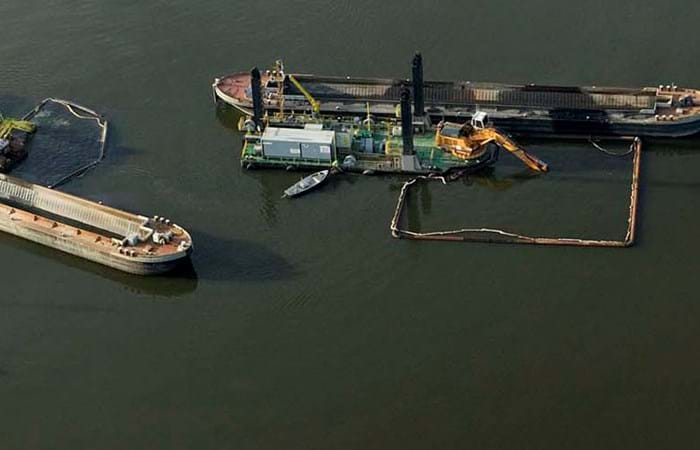The Amsterdam Petroleum harbor on the North Sea Canal has been used for the storage and transshipment of oil products since its construction in 1887. Over many years routine operations and unchecked discharges resulted in severe contamination of the harbor.
In 2004 the Department of Public Works of the Province of Noord-Holland awarded a contract to clean up the harbor to Combinatie Sanering Petroleumhaven, a consortium of Boskalis Dolman and Vries & van de Wiel. Extensive tests were conducted prior to proceeding with the remediation of the harbor slopes and the flat bed of the harbor. To determine the thickness and quality of the layer of sediment on the harbor slopes, samples were taken using an instrument we developed specifically for the purpose. In all we removed around 167,000 m3 of dredged sediment. The most heavily polluted sediments, with levels of pollution of up to 200 grams of oil per kilogram of dry matter, came from the north-eastern section of the harbor. These were taken to 't Oost depot in Den Helder for drying and ripening, after which they were conveyed to a thermal cleaner for further processing.
